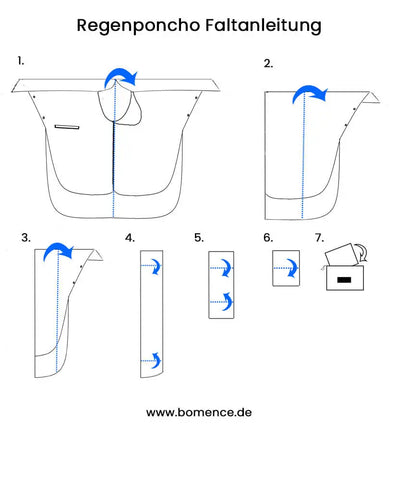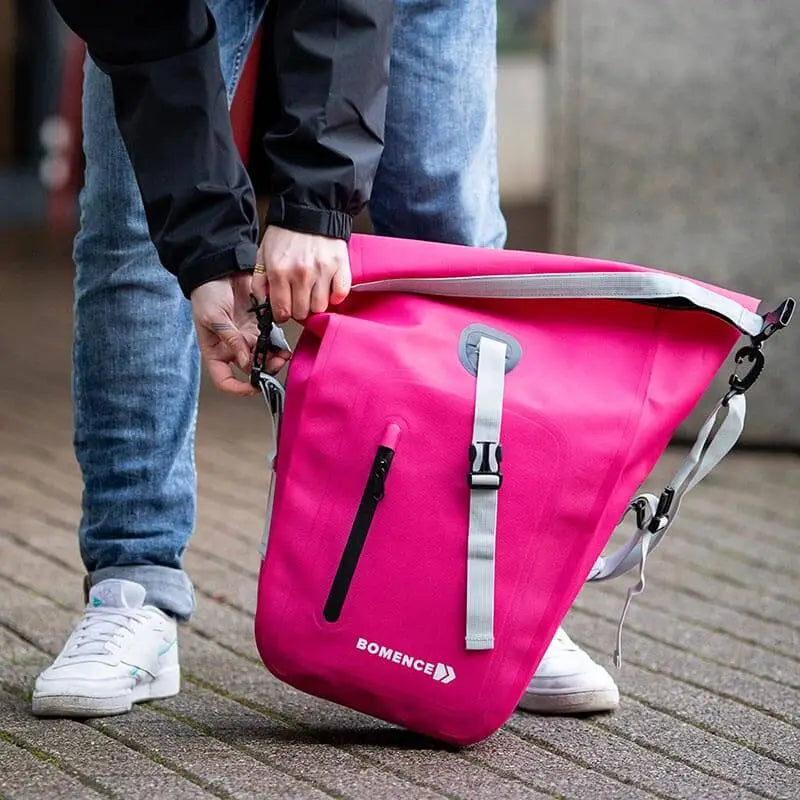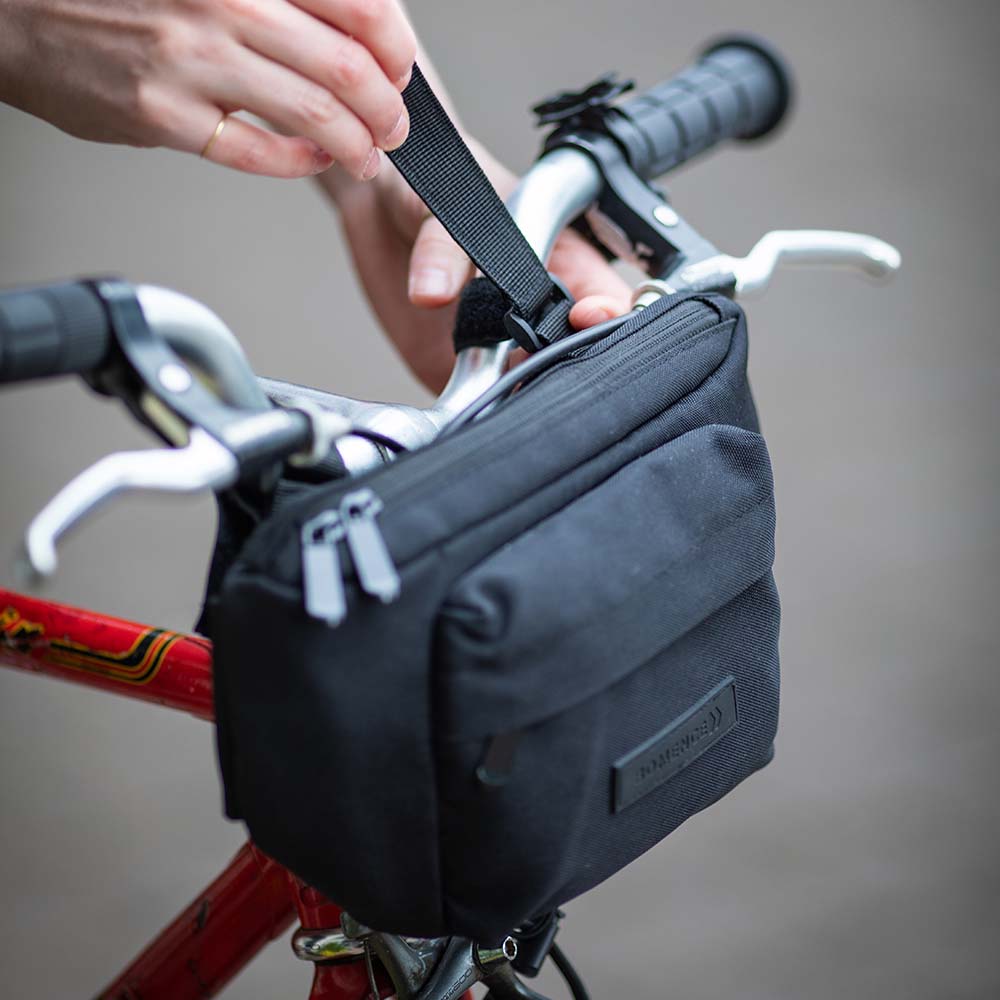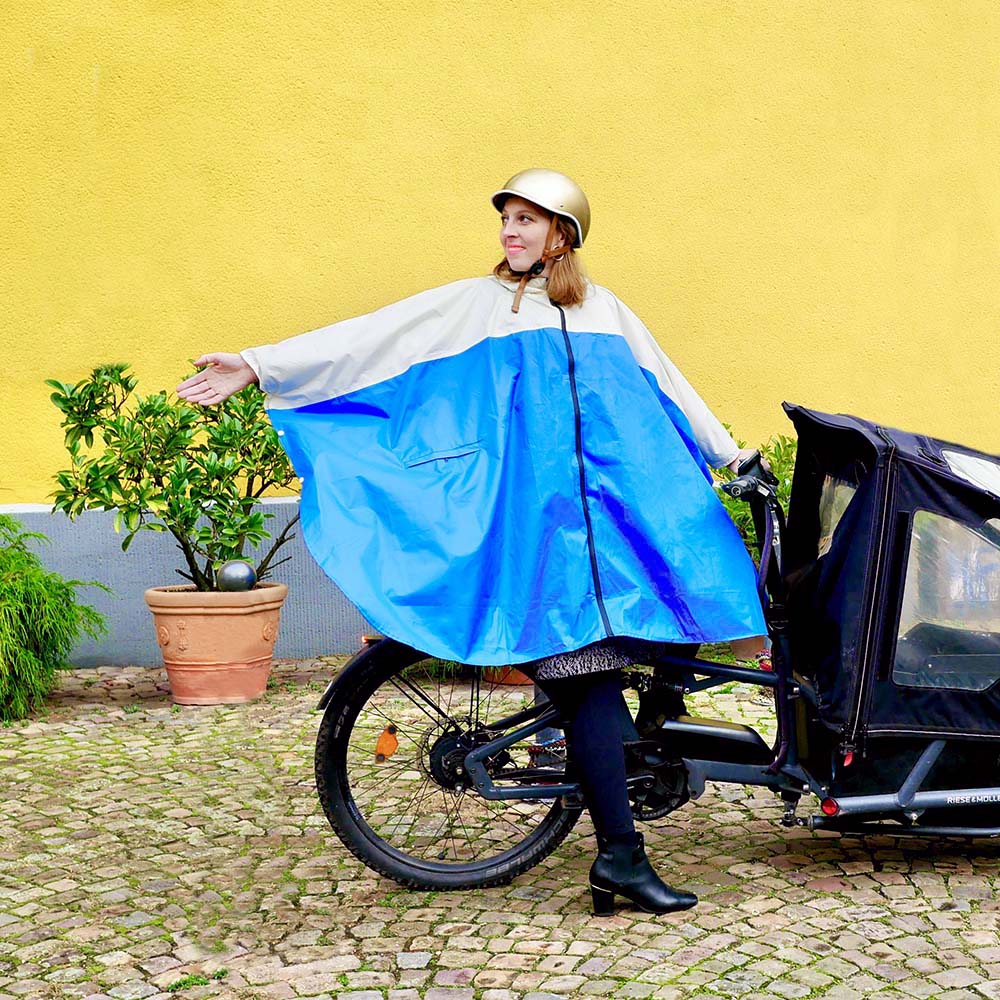If you like to ride your bike and use it for everyday transport, rain can be quite annoying. Luckily, there are ponchos and other waterproof clothing that can protect you from the wet. However, not everyone knows how to fold up their rain cape for the bike neatly and small afterwards. That's why I'm giving you folding instructions here that show you how to fold a rain poncho. I'll also give you my best tips to ensure that you and your luggage arrive at your destination dry on rainy days.
How to fold a poncho in a pocket - step by step
Basically, it is not difficult to fold a rain poncho. You just need to know how to do it best:- Lay the bicycle rain poncho flat in front of you and fold it down along the first button. The hood is now facing downwards.
- Now fold the left half to the right.
- Fold the poncho to the right again so that only one strip is visible.
- Fold the top and bottom ends inwards once.
- Fold the two outer ends towards the middle again. You now have a small rectangle in front of you.
- In the penultimate step, fold the rectangle in the center.
- The rain cape for the bike is now small enough to store in the storage bag.

Tip: I have uploaded a video on YouTube on the topic of "how to fold a poncho in a pocket" . There I demonstrate the folding instructions so that you can see exactly how to fold a rain poncho.
Here you can also download the instructions as a PDF file .
These are the features you should look for in a rain poncho
Not all ponchos offer good rain protection on your bike. In my experience, it is important that the following criteria are met:- breathable and absolutely waterproof material, e.g. polyester
- Water column of 8,000 mm
- low weight
- easy to clean
- large hood with elastic band under which your helmet can fit
- Thumb loops to keep your arms covered
- well thought-out functionality, e.g. storage bag with carabiner
Don't forget the color . So that you are visible in poor lighting conditions, your rain poncho should be colorful or bright.

The advantages of a rain poncho over other rainwear
Every cyclist has their own method of dealing with rain showers. I find ponchos particularly useful because you can put them on and take them off quickly. If you use a rain jacket and pants, however, you will need more time to make yourself waterproof. If it is raining very heavily and there is a storm, however, it can be a good idea to combine the poncho with waterproof pants. This will also protect you from splashing water.
Rain ponchos also offer you ideal freedom of movement and enough space to cover your backpack as well. Although they are large, you can fold them up to save space, as you saw in the folding instructions above. This space saving is another advantage that other rainwear does not offer, because you have to plan for significantly more storage space for the jacket and trousers. Weight also plays a role. Rain ponchos are light, while a full outfit can easily weigh half a kilogram or more.

Wet luggage? Not with me!
It is important for your health that you protect yourself from the weather. To ensure that your equipment, provisions, valuables and other items stay dry, you need a waterproof bike bag . Bomence offers saddle bags, pannier bags and 2-in-1 backpack bags that reliably keep out the rain.
They are coated on the inside with environmentally friendly and food-safe TPU (thermoplastic polyurethane). This plastic is not only waterproof, but also very abrasion-resistant, which makes your bag durable. At the same time, it is easy to fold and resistant to fats and oils. So if something leaks in the saddle bag, you can clean it and continue to use it.
Safety tips for driving in the rain
Physical exercise is important to me, which is why I incorporate it into my daily routine whenever possible. Cycling not only allows me to do something for my health every day, but also makes life a lot more fun and enjoyable . I don't let that stop me, even if the weather isn't ideal. To ensure that you are safe when it rains, I would like to give you some advice that has proven to be useful for me.
I have already mentioned visibility above and pointed out that wearing a brightly colored rain poncho will make you more visible to other road users. However, I still recommend that you turn on your bike light so that other people notice you.
Also remember that a wet road means a longer braking distance. This applies to you as well as to cars and other vehicles, which is why you should drive with extra foresight and defensively when it rains. If you see puddles in front of you and you can't judge how deep they are, you should definitely slow down. This way you avoid splashing pedestrians.
Conclusion
Rainy weather doesn't have to be an obstacle to cycling. I hope my tips have helped you and shown you what to look for in a poncho and how to fold the rain poncho .







